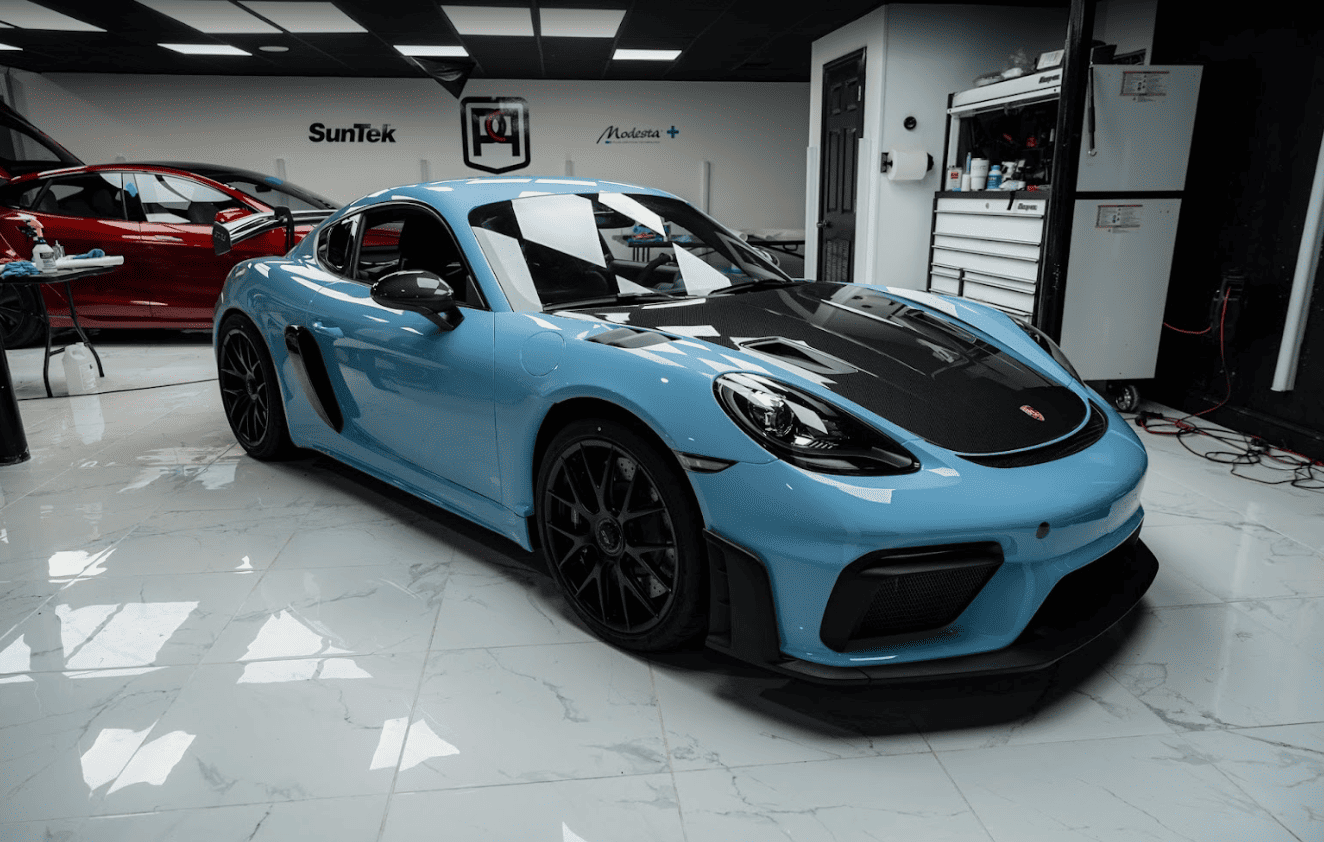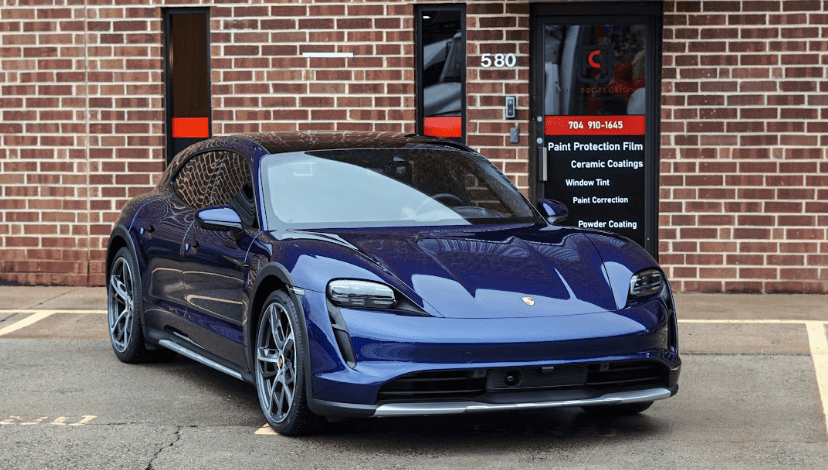You’ve just invested in your dream car. It’s a shining example of your taste and style, but upon closer inspection, you notice small imperfections in the paint—swirl marks, fine scratches, or even oxidation. Before you despair, there’s a solution that can restore your vehicle’s finish to its former glory: paint correction. In this article, we’ll explore their intricate world, shedding light on the techniques, tools, and transformative power they hold for your beloved automobile. Before delving into the world of paint correction, it’s essential to understand the common imperfections that plague a car’s paint. Here are some of the culprits:Swirl Marks: These fine, circular scratches are often caused by improper washing techniques, low-quality towels, or abrasive materials.Light Scratches: Surface-level scratches can result from various factors, including contact with bushes, small debris, or improper wiping.Water Spots: Left untreated, water spots can etch into the car’s clear coat, leaving unsightly marks.Oxidation: Exposure to the elements can cause the paint to oxidize, leading to a dull, chalky appearance.Bird Droppings and Tree Sap: These can be acidic and cause damage to the paint if not removed promptly.
Before delving into the world of paint correction, it’s essential to understand the common imperfections that plague a car’s paint. Here are some of the culprits:Swirl Marks: These fine, circular scratches are often caused by improper washing techniques, low-quality towels, or abrasive materials.Light Scratches: Surface-level scratches can result from various factors, including contact with bushes, small debris, or improper wiping.Water Spots: Left untreated, water spots can etch into the car’s clear coat, leaving unsightly marks.Oxidation: Exposure to the elements can cause the paint to oxidize, leading to a dull, chalky appearance.Bird Droppings and Tree Sap: These can be acidic and cause damage to the paint if not removed promptly.  They are not a one-size-fits-all process. It involves a series of steps, each with its level of abrasiveness and techniques. The art lies in the technician’s ability to assess the paint’s condition and choose the right combination of tools and compounds. Here’s an overview of the process:Assessment: The technician thoroughly inspects the paint to identify imperfections, their depth, and the extent of correction needed.Washing and Decontamination: Before correction begins, the vehicle is washed, and any contaminants like tar, sap, or road grime are removed. Compounding: This is the initial step in paint correction. Coarse compounds are used to remove deeper imperfections. Multiple passes may be required.Polishing: After compounding, a finer abrasive compound is used to refine the finish, remove compounding marks, and enhance the gloss.Finishing: The final step involves using ultra-fine abrasives and pads to create a high-gloss, swirl-free finish.
They are not a one-size-fits-all process. It involves a series of steps, each with its level of abrasiveness and techniques. The art lies in the technician’s ability to assess the paint’s condition and choose the right combination of tools and compounds. Here’s an overview of the process:Assessment: The technician thoroughly inspects the paint to identify imperfections, their depth, and the extent of correction needed.Washing and Decontamination: Before correction begins, the vehicle is washed, and any contaminants like tar, sap, or road grime are removed. Compounding: This is the initial step in paint correction. Coarse compounds are used to remove deeper imperfections. Multiple passes may be required.Polishing: After compounding, a finer abrasive compound is used to refine the finish, remove compounding marks, and enhance the gloss.Finishing: The final step involves using ultra-fine abrasives and pads to create a high-gloss, swirl-free finish.
What is Paint Correction?
Also known as paint polishing or buffing, it is a meticulous process that involves the removal of imperfections from a vehicle’s paintwork. These flaws could be anything from oxidation to water spots to tiny scratches to swirl marks. To make the paint look brand-new, car paint correction Charlotte seeks to restore its clarity, depth, and gloss.This process requires a skilled technician who uses specialized tools and abrasives to level the paint’s surface, effectively removing or minimizing imperfections. It’s an art form that demands patience, precision, and an in-depth understanding of car paint types and finishes.The Imperfections We Encounter
 Before delving into the world of paint correction, it’s essential to understand the common imperfections that plague a car’s paint. Here are some of the culprits:Swirl Marks: These fine, circular scratches are often caused by improper washing techniques, low-quality towels, or abrasive materials.Light Scratches: Surface-level scratches can result from various factors, including contact with bushes, small debris, or improper wiping.Water Spots: Left untreated, water spots can etch into the car’s clear coat, leaving unsightly marks.Oxidation: Exposure to the elements can cause the paint to oxidize, leading to a dull, chalky appearance.Bird Droppings and Tree Sap: These can be acidic and cause damage to the paint if not removed promptly.
Before delving into the world of paint correction, it’s essential to understand the common imperfections that plague a car’s paint. Here are some of the culprits:Swirl Marks: These fine, circular scratches are often caused by improper washing techniques, low-quality towels, or abrasive materials.Light Scratches: Surface-level scratches can result from various factors, including contact with bushes, small debris, or improper wiping.Water Spots: Left untreated, water spots can etch into the car’s clear coat, leaving unsightly marks.Oxidation: Exposure to the elements can cause the paint to oxidize, leading to a dull, chalky appearance.Bird Droppings and Tree Sap: These can be acidic and cause damage to the paint if not removed promptly. The Science Behind Them
To understand them fully, it’s crucial to grasp the science behind them. A vehicle’s paint consists of multiple layers, with the topmost layer being the clear coat. The clear coat serves as a protective barrier for the underlying layers of actual colored paint and primer. It is the clear coat that typically bears the brunt of imperfections and damage.The process involves the controlled removal of a thin layer of the clear coat. Skilled technicians use various abrasive compounds and polishing pads to level the surface. As the surface becomes more uniform, imperfections disappear, leaving behind a smooth, glossy finish.The Tools and Techniques
They are a blend of art and science, and the tools and techniques used are paramount to their success. Here are some of their essential components:Dual-Action Polishers: These power tools are commonly used for paint correction. They oscillate and rotate simultaneously, reducing the risk of over-correction and paint burning.Polishing Compounds: A range of abrasive compounds, from coarse to fine, address different imperfections.Polishing Pads: Different types of pads, including foam, microfiber, and wool, are selected based on the level of correction required.Paint Depth Gauge: This tool measures the thickness of the paint to ensure safe correction without compromising the clear coat.Detailing Lights: Proper lighting is crucial for identifying imperfections during the correction process.The Art of Paint Correction
 They are not a one-size-fits-all process. It involves a series of steps, each with its level of abrasiveness and techniques. The art lies in the technician’s ability to assess the paint’s condition and choose the right combination of tools and compounds. Here’s an overview of the process:Assessment: The technician thoroughly inspects the paint to identify imperfections, their depth, and the extent of correction needed.Washing and Decontamination: Before correction begins, the vehicle is washed, and any contaminants like tar, sap, or road grime are removed. Compounding: This is the initial step in paint correction. Coarse compounds are used to remove deeper imperfections. Multiple passes may be required.Polishing: After compounding, a finer abrasive compound is used to refine the finish, remove compounding marks, and enhance the gloss.Finishing: The final step involves using ultra-fine abrasives and pads to create a high-gloss, swirl-free finish.
They are not a one-size-fits-all process. It involves a series of steps, each with its level of abrasiveness and techniques. The art lies in the technician’s ability to assess the paint’s condition and choose the right combination of tools and compounds. Here’s an overview of the process:Assessment: The technician thoroughly inspects the paint to identify imperfections, their depth, and the extent of correction needed.Washing and Decontamination: Before correction begins, the vehicle is washed, and any contaminants like tar, sap, or road grime are removed. Compounding: This is the initial step in paint correction. Coarse compounds are used to remove deeper imperfections. Multiple passes may be required.Polishing: After compounding, a finer abrasive compound is used to refine the finish, remove compounding marks, and enhance the gloss.Finishing: The final step involves using ultra-fine abrasives and pads to create a high-gloss, swirl-free finish. 


